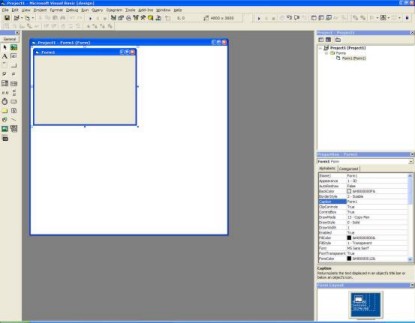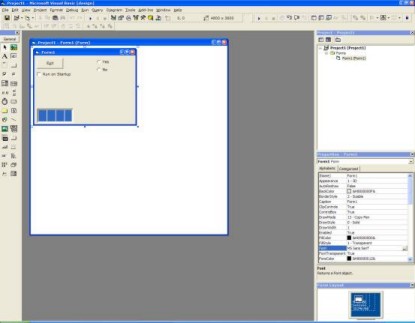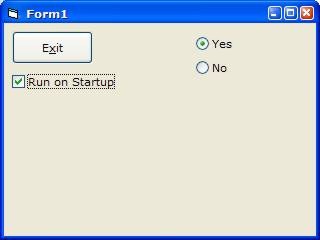 How to add WinXP Themes to VB
applications
How to add WinXP Themes to VB
applications
Microsoft Windows XP is the latest version of Windows. It includes many new
features and updates to the Common Controls Library. One of the main features is
the Windows XP Themes. This allows you to select a theme, and the entire look
and feel of Windows, as you know it will change. However, if you were to write a
program in VB, the buttons, textboxes you were to use, would not change. You
need to tell Windows XP that you are going to use the new version of the Common
Controls Library, and to do this you must include an application manifest. A
manifest is an XML document that Windows XP searches for in the application’s
directory when you open an application. This manifest tells Windows XP to use
the new version of COMCTL32.DLL (Version 6). Here is a brief tutorial on
creating an application manifest, for Visual Basic:
Load Microsoft Visual Basic
and start a new project

Click for a larger
picture
Now add a few standard
controls, a button, a checkbox, two option buttons and a
text box

Click for a larger
picture
Give them captions, and program the button to Exit
when clicked.
Private Sub
Command1_Click()
Unload Me
End Sub
COMCTL32.DLL exports a
function called InitCommonControls. This is exported in COMCTL32.DLL versions
from Windows 95. This needs to be called when the application is started, to
ensure that the common controls library is opened. The declaration is not
available in the API viewer. Make sure that you use Form_Initialize and not
Form_Load, to enter the code. So the code in the form should now read:
Option Explicit
Private Declare Function
InitCommonControls Lib
"comctl32.dll" ()
As Long
Private Sub
Command1_Click()
Unload Me
End Sub
Private Sub
Form_Initialize()
InitCommonControls
End Sub
Now we need to compile
this into an executable file (the manifest will only work when run as an EXE)
and actually create the manifest. I have called my application
COMCTLTest.EXE.
You can call your executable anything, but that name needs to correspond with
the name on the manifest.
Go to the folder, at which
you have compiled the application into, load notepad and enter the following:
<?xml
version="1.0" encoding="UTF-8" standalone="yes"?>
<assembly xmlns="urn:schemas-microsoft-com:asm.v1" manifestVersion="1.0">
<assemblyIdentity type="win32" processorArchitecture="*" version="6.0.0.0"
name="mash"/>
<description>Enter your Description Here</description>
<dependency>
<dependentAssembly>
<assemblyIdentity
type="win32"
name="Microsoft.Windows.Common-Controls" version="6.0.0.0"
language="*"
processorArchitecture="*"
publicKeyToken="6595b64144ccf1df"
/>
</dependentAssembly>
</dependency>
</assembly>
Save this as:
<YOUR EXE
NAME>.EXE.MANIFEST
So because I compiled
my application as COMCTLTest.exe
I would save my manifest as:
COMCTLTest.EXE.MANIFEST
Now, you are ready to run
your application. Double click on the executable, and there you are!!

By Thomas Spink, Age 15
(thomas.spink@ntlworld.com)
Back to Tutorials
- Main
|